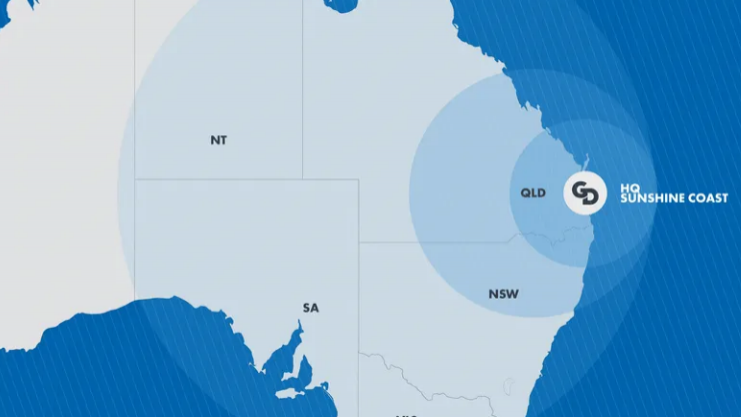Australia is no stranger to challenging landscapes, from rugged hilltops and coastal flats to dry, expansive outback stretches. Farmers, landholders, and rural communities across the country regularly face the challenge of irrigating on tough terrains. Whether you're managing hilly farmland, sandy soils, or flood-prone properties, finding the right irrigation system is key to ensuring crops and vegetation thrive.
But how do you overcome these natural obstacles, and what irrigation solutions are available to make it easier? The Unique Challenges of Australian Terrains Australia’s diverse landscapes require tailored irrigation strategies. Here are some of the common challenges faced by rural landowners: Hilly or Sloping Land: Water can run off quickly on slopes, preventing it from soaking into the soil where it's needed. Sandy or Loamy Soils: These soils drain quickly, meaning water can easily run off or evaporate before plants can take it up. Flood-Prone Areas: While excess water may seem like a blessing, it can lead to waterlogging, which damages crops and soil structure. Remote or Off-Grid Properties: Some Australian farms may not be connected to mains power or water systems, requiring alternative solutions. Each of these challenges requires a thoughtful approach to irrigation—one that maximizes water efficiency while working within the constraints of the land.
Effective Irrigation Solutions for Sloping Land Slopes pose a significant challenge for water distribution. On hilly properties, water can easily flow downhill, often causing soil erosion or uneven watering. To address this, drip irrigation or subsurface irrigation systems are highly effective. These systems deliver water directly to the root zone, ensuring that water stays in place without running off. They also allow for deeper penetration, which is especially beneficial for crops with deeper root systems. Alternatively, sprinkler systems with pressure regulators can provide more even distribution. In some cases, sprinklers with adjustable spray patterns can target specific areas, reducing waste and ensuring that water is distributed evenly across the land. Tackling Sandy and Loamy Soils Sandy soils drain water quickly, leaving crops with insufficient moisture. On the other hand, loamy soils—while better at holding moisture—can still lead to water runoff if not managed properly. To address these soil types, the key is to slow down the water delivery. Drip irrigation is ideal in these situations because it provides a slow, consistent water supply directly to the roots, helping prevent evaporation and runoff.
Additionally, mulching can help retain moisture at the soil surface and prevent evaporation, particularly in hot, dry climates. Managing Flood-Prone Properties Properties prone to flooding or heavy rainfall need a system that can handle excessive water, avoiding the risk of waterlogging. Surface irrigation systems, such as flood irrigation, can be effective when managed carefully with proper drainage.
Water management becomes crucial in these environments. Installing drainage channels, water diversion techniques, and high-flow pumps ensures that excess water doesn’t accumulate and cause crop damage. Off-Grid and Remote Irrigation Solutions For properties that are off-grid or without reliable access to mains power, there are alternative, sustainable options. Solar-powered pumps are a popular choice in remote areas. These systems use solar panels to power irrigation pumps, making them an environmentally friendly and cost-effective solution. For farms located in arid or semi-arid areas, rainwater harvesting is also a viable option. Storing rainwater in large tanks allows for irrigation during dry spells, ensuring that crops get the water they need even in challenging conditions.
Adapting to the Land Ultimately, the best irrigation solution for any challenging terrain is one that considers the unique characteristics of the land. Whether it's the slope of a hill, the drainage properties of the soil, or the seasonal water availability, an effective irrigation system should adapt to these factors to make the most of every drop of water. By choosing the right system and combining it with smart water management practices, Australian farmers and landowners can successfully irrigate even the most challenging terrains.
More https://www.gdwatersolutions.com.au/services/irrigation







